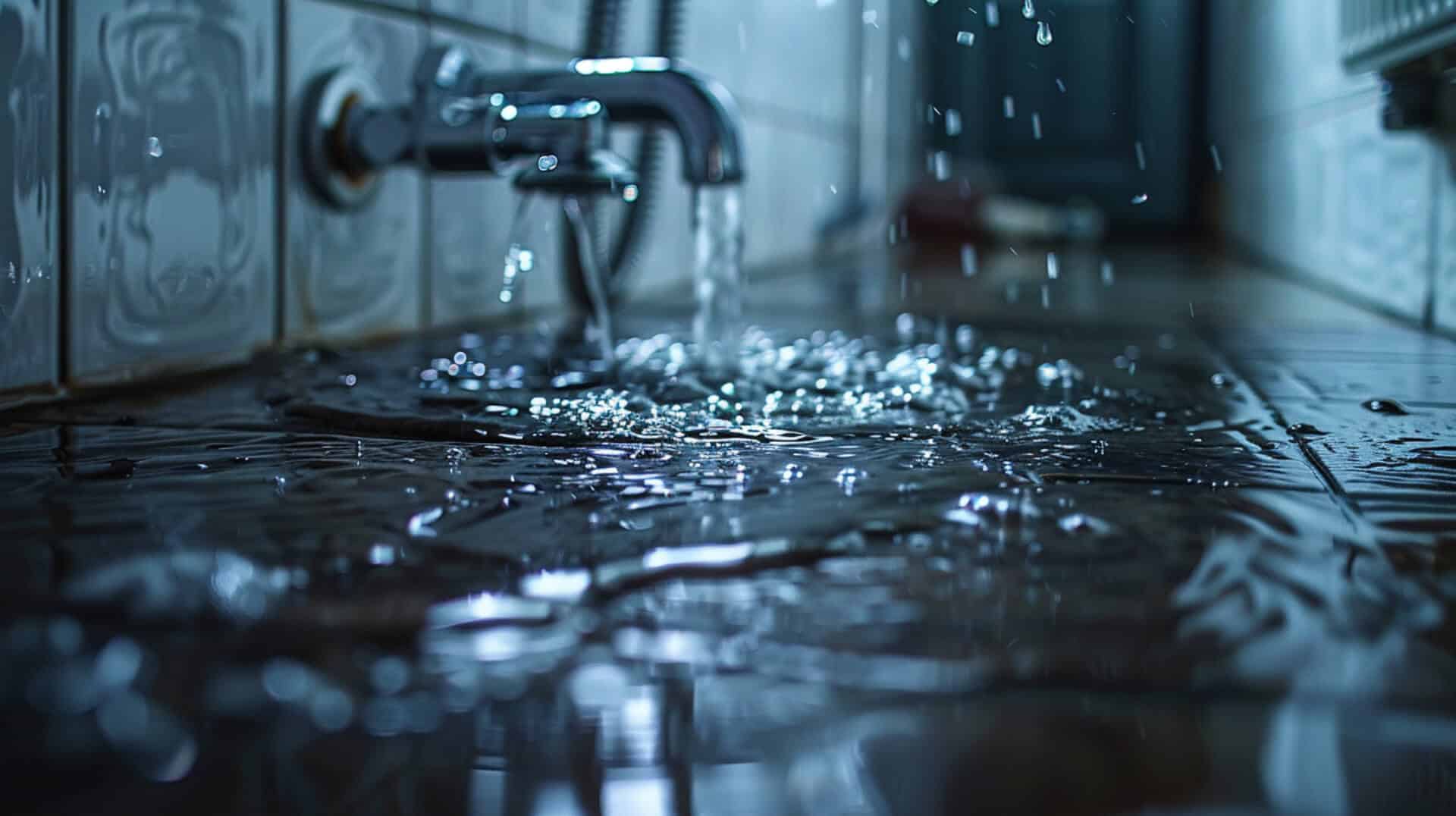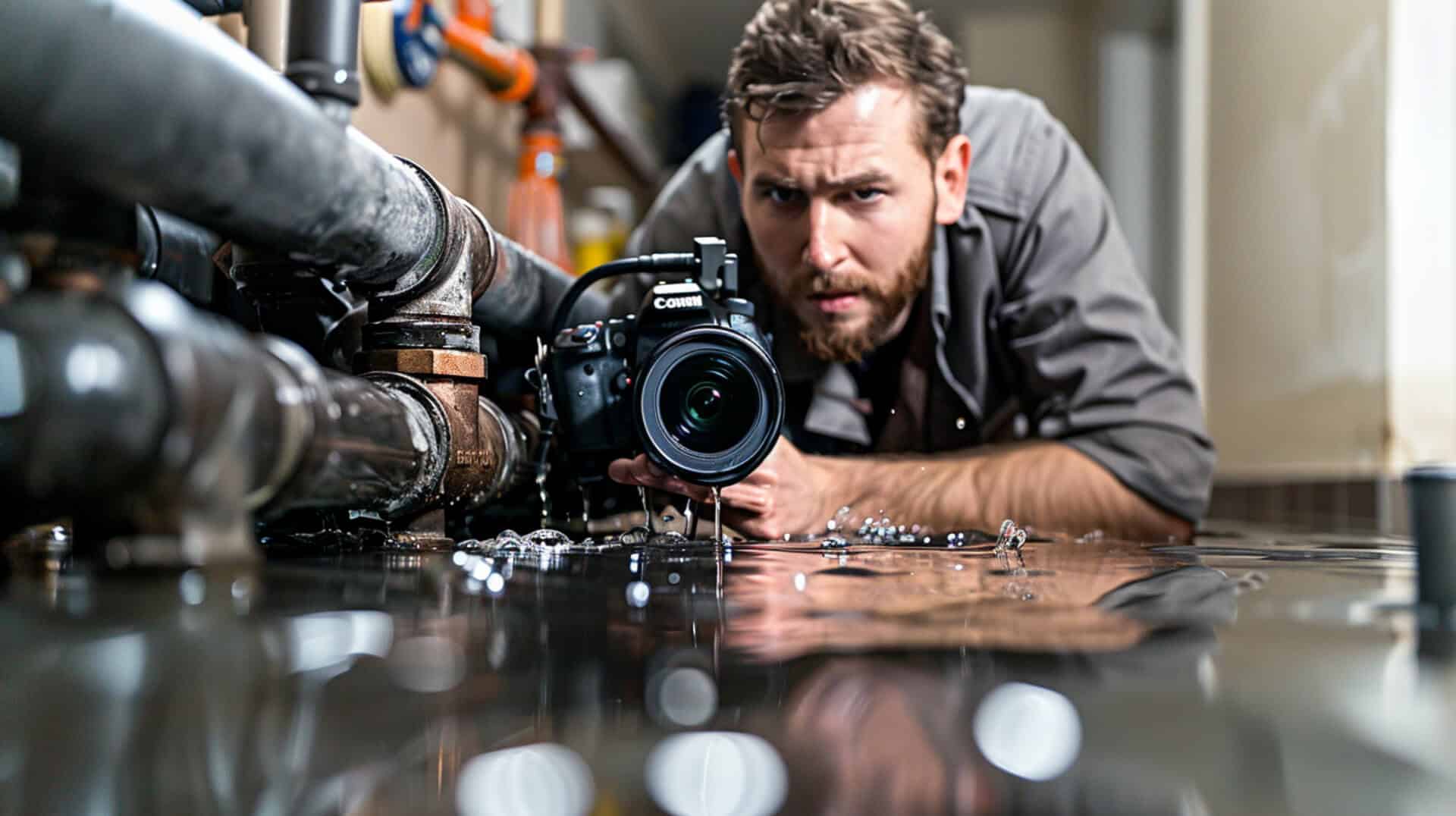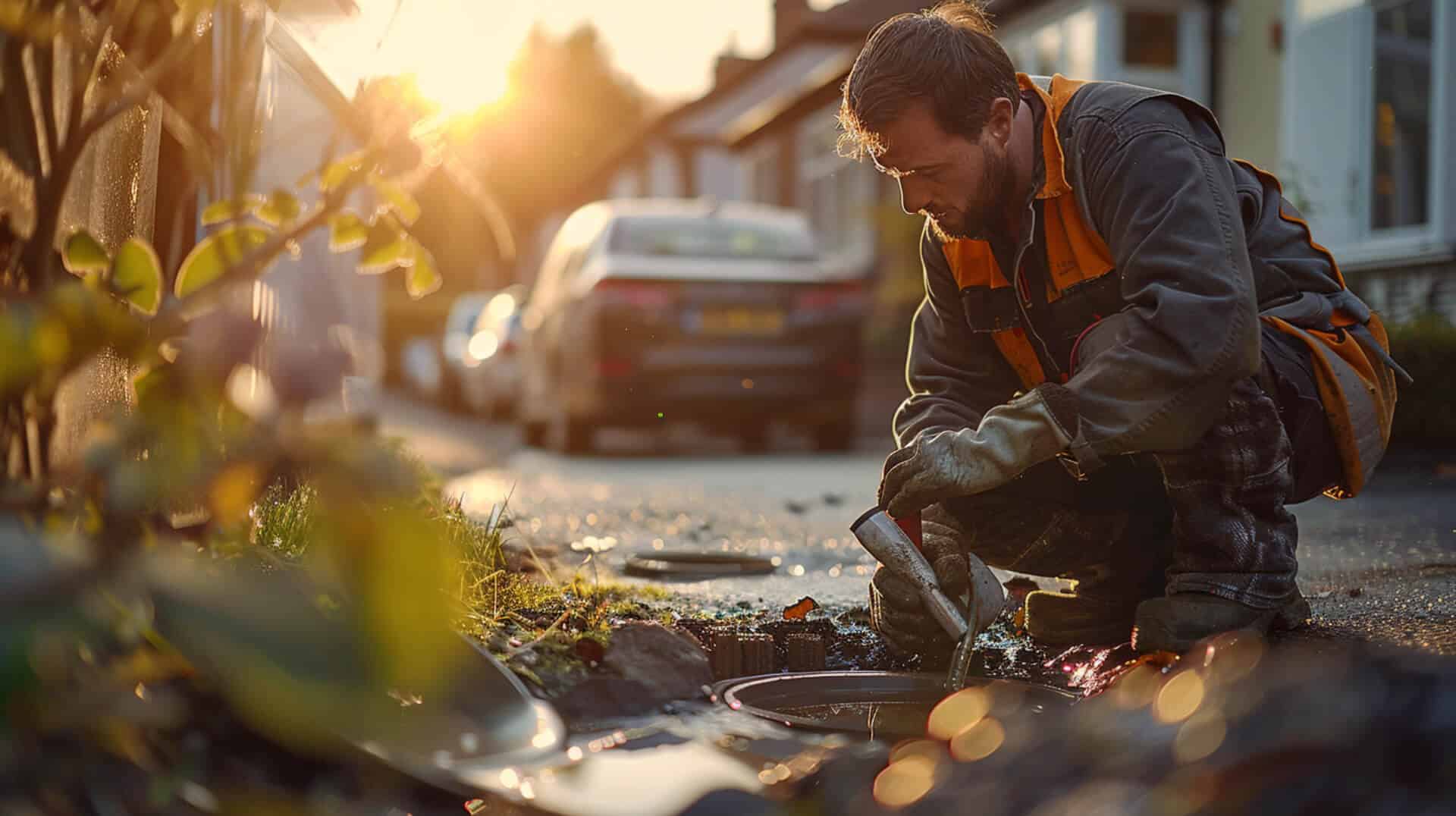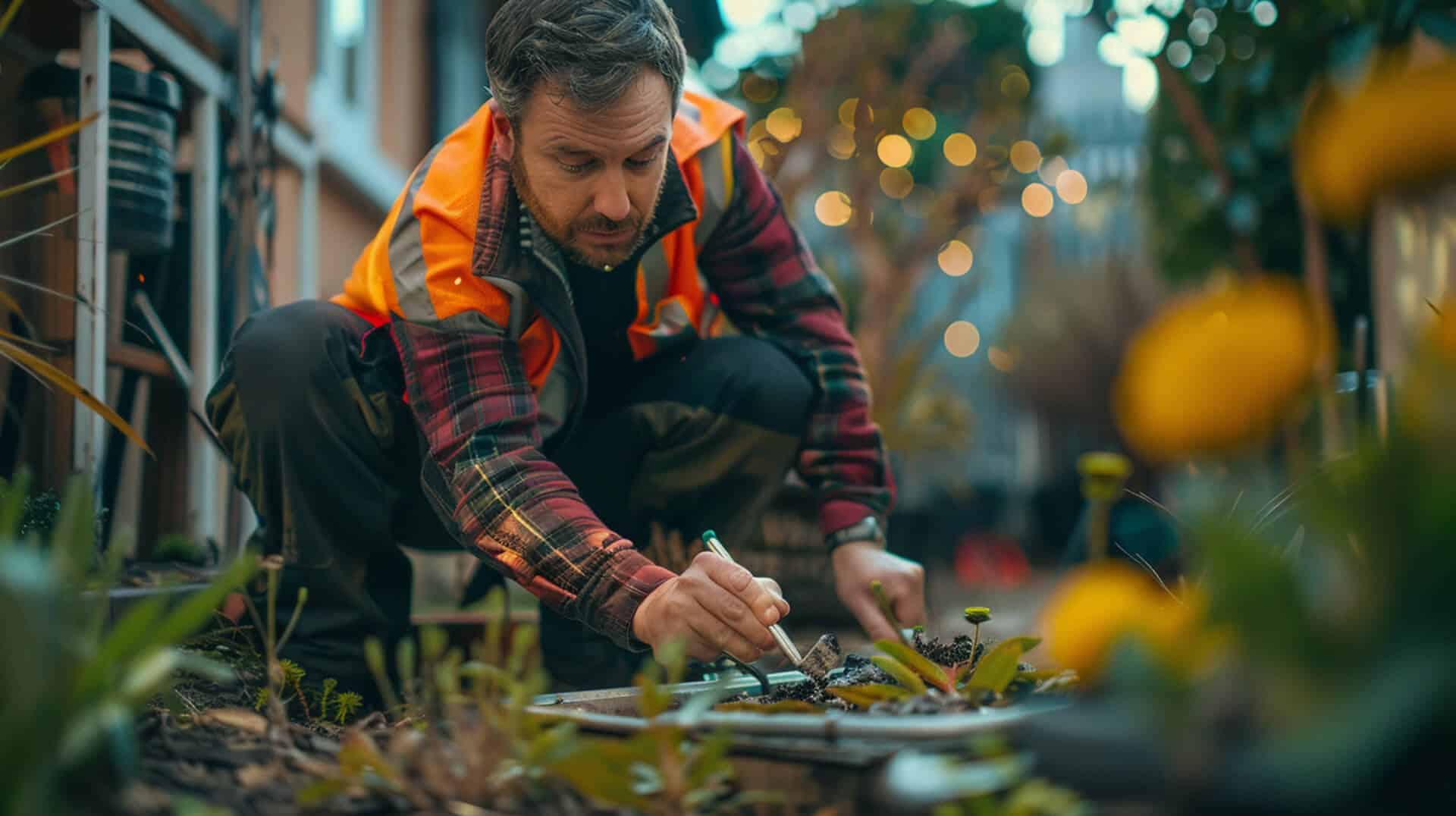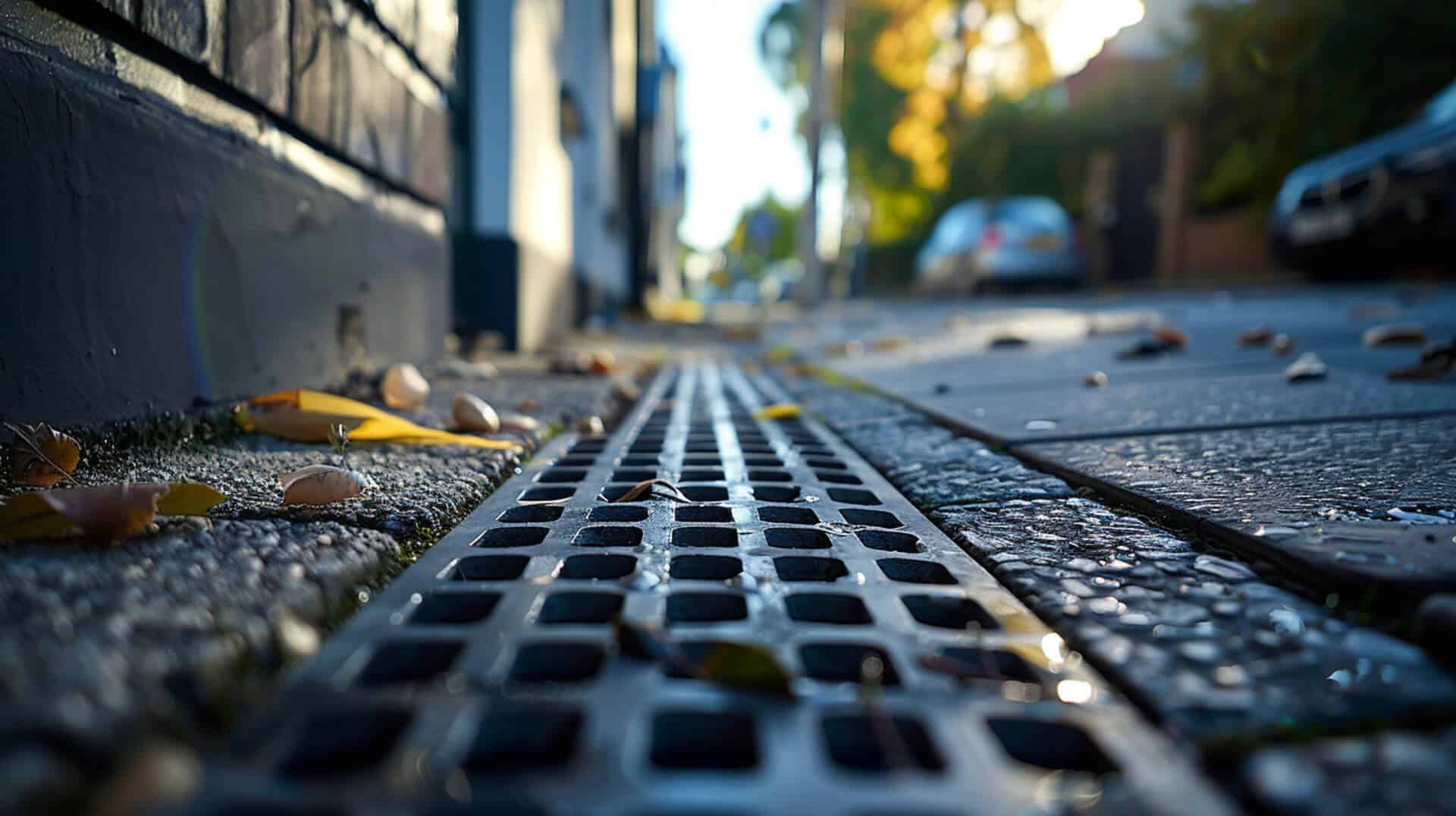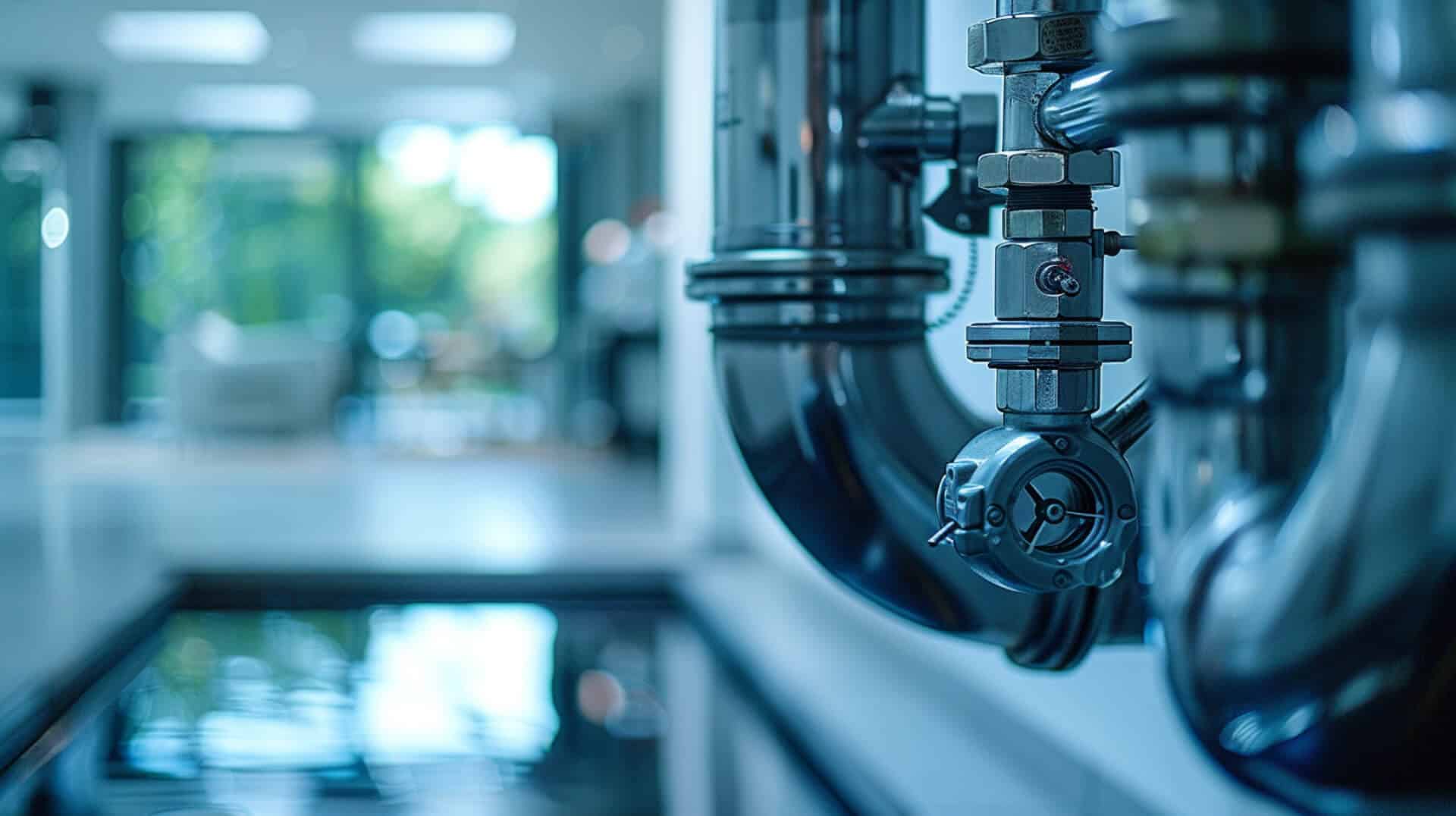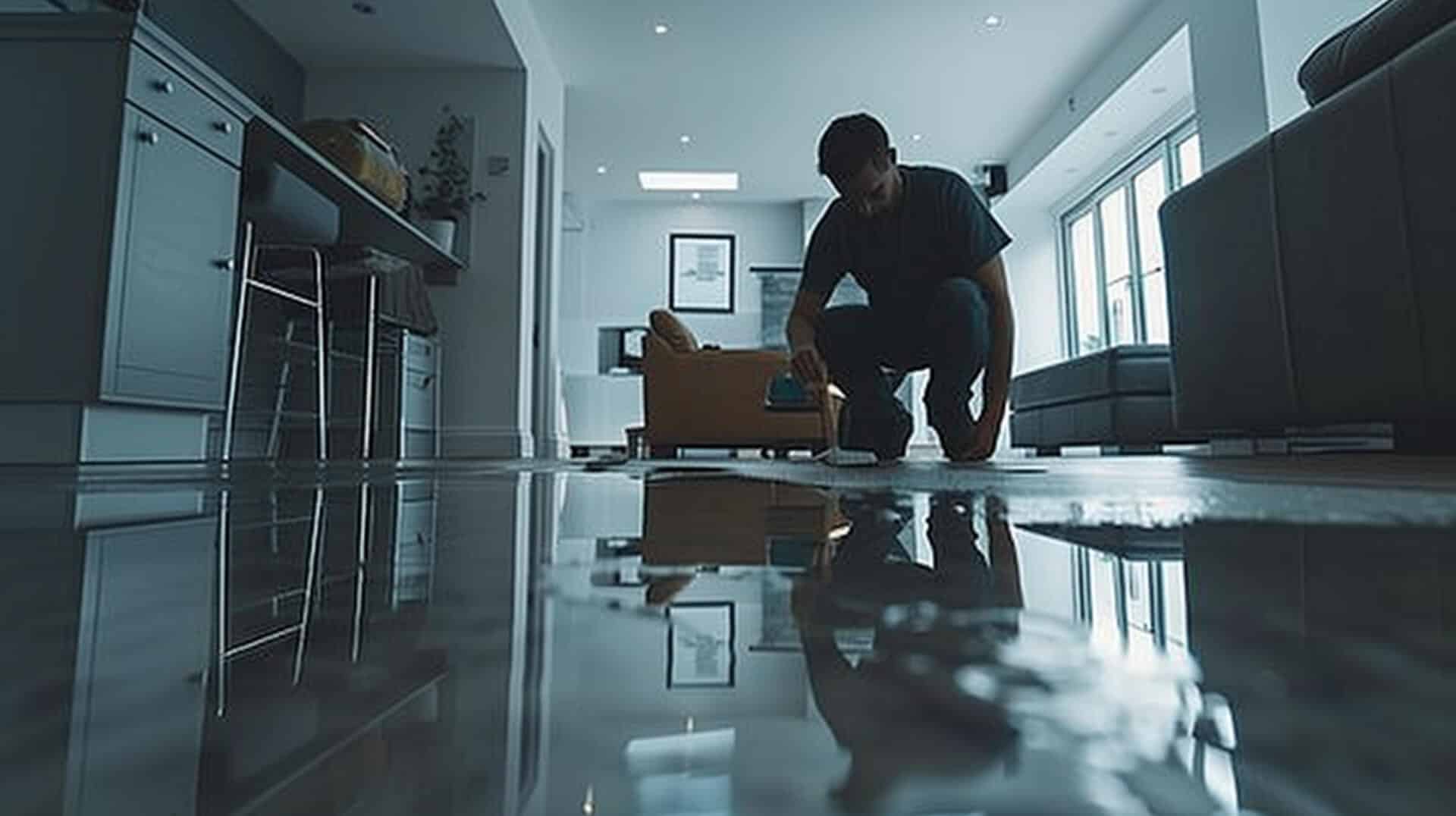 What Problems Can A Structural Drain Survey Identify
What Problems Can A Structural Drain Survey Identify
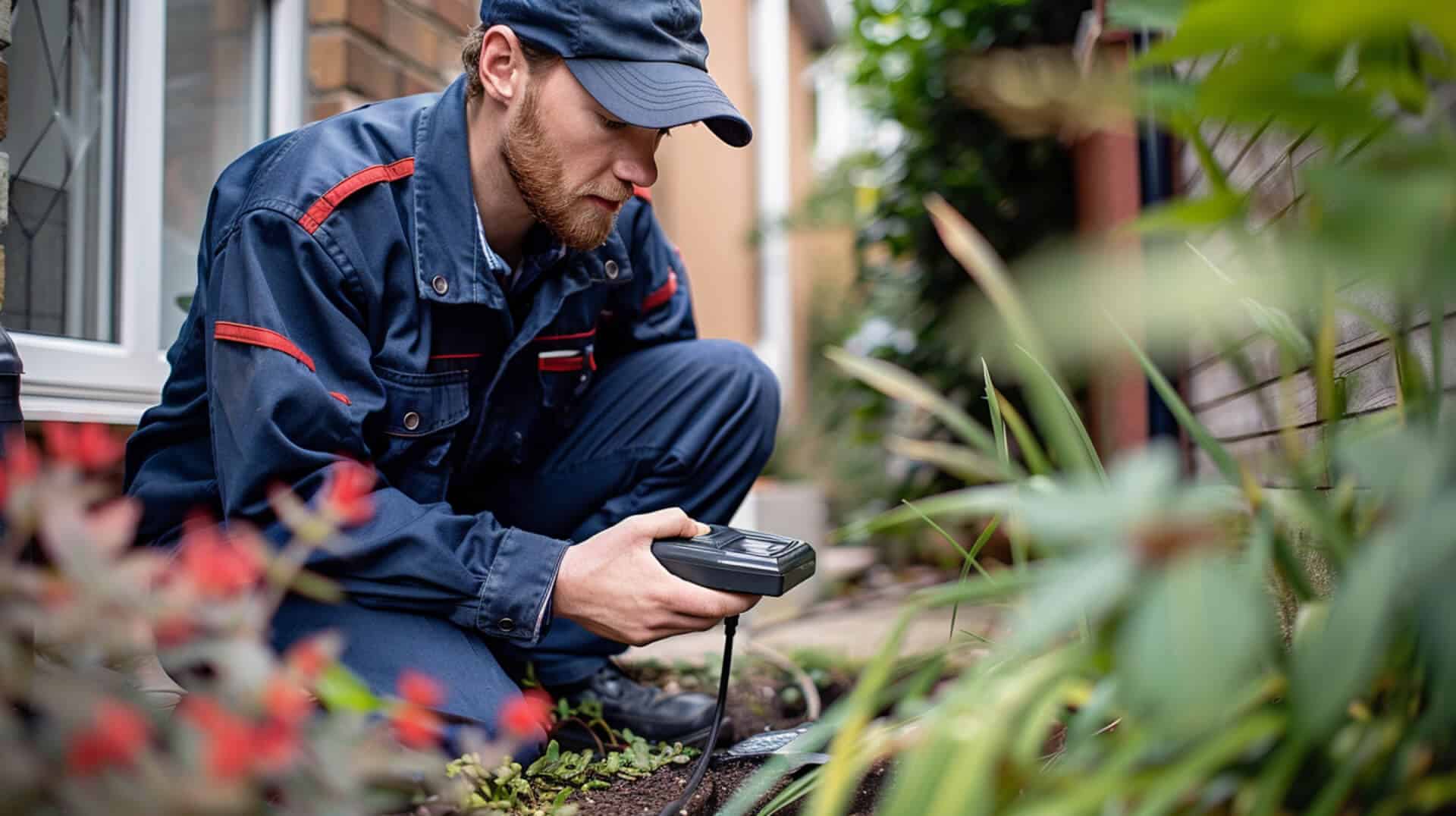
A structural drain survey is a critical diagnostic tool used to assess the condition of a property’s drainage system. Employing Closed-Circuit Television (CCTV) technology, these surveys provide a visual inspection of underground drains, sewers, and pipelines. The necessity of such surveys arises from the need to identify potential or existing issues within the drainage system that could lead to significant property damage or health hazards if left unchecked.
Enhancements Through CCTV Technology
CCTV technology has revolutionised structural drain surveys by allowing for real-time, detailed visual assessments. This technology enables the identification of issues such as blockages, structural damage, and wear that would otherwise remain undetected until they cause serious problems. The high-resolution cameras can navigate through complex pipe networks, providing clear images and videos of the interior conditions.
Common Utilisation Scenarios
Structural drain surveys are commonly utilised in various scenarios, including pre-purchase inspections for potential homebuyers, investigations of persistent blockages or drainage issues, and assessments before construction or renovation projects. These surveys are essential for ensuring that the drainage system is in good condition and for planning any necessary repairs or maintenance.
Technological Advancements
Advancements in technology have improved drain survey processes significantly. Innovations such as sonar surveys, laser scanning, and bespoke software for data analysis have enhanced the accuracy and efficiency of these inspections. These cutting-edge techniques allow for a more comprehensive understanding of the drainage system’s condition, facilitating informed decision-making for property owners and managers.
Understanding the Importance of Drain Surveys for Property Management
Regular drain surveys are a critical component of property management. They serve as a proactive measure to maintain the integrity of a property’s drainage system. By prioritising these surveys, property owners can identify and address issues before they escalate into more significant, costly problems.
Early Detection and Cost Savings
The early detection of drainage issues through CCTV drain surveys can lead to substantial long-term cost savings. By identifying blockages, pipe damage, or tree root intrusions at an early stage, you can avoid the more extensive repairs that might be needed if these problems are left unaddressed.
Drain Surveys and Property Value
Drain surveys play a pivotal role in property value assessment. A well-maintained drainage system is a key factor in determining a property’s market value. Potential buyers or investors often consider the state of a property’s infrastructure before making a decision.
Contribution to Environmental and Health Safety
Drain surveys contribute significantly to environmental and health safety. By ensuring that drainage systems are free from blockages and leaks, surveys help prevent potential flooding and contamination, thereby maintaining health and hygiene standards within the property.
Common Problems Identified by Drain Surveys
Structural drain surveys are instrumental in diagnosing a variety of issues within drainage systems. These surveys utilise advanced CCTV technology to provide a clear picture of the condition of underground pipes.
Types of Blockages Detected
Drain surveys frequently uncover blockages caused by waste buildup, which can lead to reduced flow efficiency and potential backups. Identifying these blockages early is crucial for maintaining a functional drainage system.
Threat of Tree Roots
Tree roots can pose a significant threat to drainage systems by penetrating pipe joints and causing damage or obstructions. Drain surveys are effective in detecting such intrusions, allowing for timely remedial actions to protect the integrity of the system.
Pipe Misalignments and Breakages
Misalignments and breakages in pipes are not uncommon and can be identified through drain surveys. These issues, if left unchecked, can compromise the entire drainage system, leading to more severe problems like leaks or collapses.
Signs of Subsidence
Subsidence, which can be a consequence of drainage issues, is another problem that drain surveys can detect. Signs of subsidence include visible shifts in soil or structural foundations, which can be indicative of underlying drainage problems.
By identifying these common issues, drain surveys provide property owners with the necessary information to make informed decisions about maintenance and repairs, ensuring the longevity and safety of their property’s drainage infrastructure.
The Process of Conducting a Structural Drain Survey
A structural drain survey is a meticulous process that employs Closed-Circuit Television (CCTV) cameras to evaluate the condition of drainage systems. This section outlines the steps and techniques involved in conducting a comprehensive drain survey.
Utilisation of CCTV in Drain Surveys
CCTV cameras are central to the drain survey process, providing real-time visual inspection of the interior of drainage pipes. These cameras capture detailed images that help in identifying any defects or obstructions within the system.
Preparatory Steps for Drain Surveys
Before initiating a drain survey, several preparatory steps are necessary:
- Accessing the Drainage System: Professionals need to gain access to the system, which may involve removing manhole covers or creating access points.
- Ensuring Safety: Ensuring the safety of the survey environment is paramount, including checking for any hazardous gases or unstable structures.
- Equipment Setup: Setting up the CCTV equipment and other diagnostic tools required for the survey.
Interpreting Drain Survey Data
Professionals analyse the data collected from CCTV footage to identify issues. They look for signs of damage, blockages, and wear that could indicate potential or existing problems.
Innovative Techniques for Comprehensive Assessments
In addition to CCTV, innovative techniques are employed to enhance the accuracy of drain surveys:
- Sonar Surveys: Utilised in pipes filled with water to detect variations in pipe structure.
- Laser Scanning: Provides precise measurements of pipe dimensions and deformities.
- Bespoke Software: Assists in analysing the data and generating detailed reports.
These advanced diagnostic tools enable professionals to conduct thorough assessments, ensuring that any issues within the drainage system are accurately identified and addressed.
The Role of Drain Surveys in Construction and Renovation Planning
When planning construction or renovation projects, understanding the current state of underground infrastructure is crucial. Structural drain surveys provide this insight, ensuring that new developments do not negatively impact existing drainage systems.
Guiding Construction Project Planning
Drain surveys inform the planning phase of construction projects. By revealing the location and condition of drainage pipes, these surveys help architects and engineers design structures that accommodate existing infrastructure, preventing costly modifications later.
Ensuring Compliance with Building Regulations
Compliance with Building Regulations is non-negotiable in construction. Drain surveys are critical in this regard, as they ensure that sewer connections and energy efficiency standards meet the requirements set out in Approved Document H and Part L.
Preventing Future Drainage Issues
A drain survey can identify areas susceptible to future problems, allowing for preemptive measures. This foresight is invaluable in mitigating risks that could disrupt construction timelines and inflate budgets.
Assisting Soil Enhancement Techniques
For projects involving soil enhancement, such as lime stabilisation, drain surveys provide essential data. Understanding soil conditions and drainage patterns is key to selecting the appropriate enhancement technique, ensuring the longevity and stability of the construction project.
By incorporating drain surveys into the planning stages, property owners and construction professionals can safeguard against unforeseen issues, adhere to regulatory standards, and enhance the overall success of their building endeavours.
Financial and Regulatory Implications of Drainage Issues
Impact on Property Negotiations
Identified drainage problems can significantly influence property negotiations. If a structural drain survey uncovers issues such as blockages or pipe damage, this information can affect the property’s market value. As a potential buyer or seller, you may use the findings to negotiate the price, considering the cost of necessary repairs or improvements.
Insurance Considerations
Drainage issues also play a critical role in insurance considerations. Insurers may adjust coverage terms based on the risk profile of a property’s drainage system. Regular drain surveys can provide evidence of proper maintenance, potentially leading to more favourable insurance terms.
Ensuring Regulatory Compliance
Compliance with sewage discharge regulations is mandatory. A structural drain survey can verify that a property’s drainage system adheres to the relevant standards, such as those outlined in Building Regulations Approved Document H. This compliance is essential for legal operations and avoiding potential fines.
Cost Implications of Drain Surveys
While there are costs associated with conducting a structural drain survey, they are often outweighed by the benefits of preventing more expensive repairs in the future. The investment in a survey can provide a detailed understanding of the drainage system’s condition, guiding cost-effective maintenance and repair strategies.
Selecting a Qualified Surveyor for Drain Inspections
When it comes to ensuring the integrity of your property’s drainage system, selecting a qualified surveyor is paramount. A professional surveyor should possess a blend of experience, technical knowledge, and accreditation to conduct thorough and reliable drain inspections.
Essential Qualifications for Surveyors
A professional surveyor should have:
- A solid background in drainage systems and their complexities.
- A track record of conducting detailed and accurate drain surveys.
- Relevant certifications that attest to their expertise in the field.
The Importance of NADC Accreditation
Accreditation from the National Association of Drainage Contractors (NADC) is a mark of quality and reliability. It indicates that the surveyor adheres to high standards of practice and is committed to ongoing professional development.
Comparing Quotes and Services
When comparing quotes, consider:
- The comprehensiveness of the services offered.
- The technology and methods the surveyor will use.
- The clarity and detail of the report you will receive.
Advanced Tools for Comprehensive Inspections
Surveyors should be equipped with:
- State-of-the-art CCTV camera systems for visual inspections.
- High-pressure water jetting equipment for clearing blockages.
- Sonar units and laser scanners for precise measurements and diagnostics.
By carefully selecting a surveyor with the right qualifications and tools, you can ensure that your drain inspections are conducted efficiently, providing you with accurate information to make informed decisions about your property’s drainage system.
Benefits of Regular Drain Maintenance and Inspections
Regular inspections and maintenance of drainage systems are essential practices that contribute significantly to the longevity and functionality of a property’s infrastructure.
Contributions to System Integrity
Regular drain inspections are vital for maintaining the integrity of your drainage system. These inspections can identify potential issues before they escalate, allowing for timely interventions that can prevent costly repairs.
Preventative Maintenance Strategies
To prevent future drainage issues, consider implementing the following maintenance strategies:
- Regular Cleaning: Ensuring that drains are regularly cleaned to prevent blockages.
- Prompt Repairs: Addressing any identified issues promptly to avoid further damage.
- System Upgrades: Updating older systems to meet current standards and improve efficiency.
The Role of Gutter Maintenance
Gutter maintenance is an integral part of overall drain care. Clean gutters help prevent water overflow and reduce the risk of water damage to the property’s foundation and landscaping.
Recommended Frequency of Drain Surveys
It is recommended that property owners schedule drain surveys:
- Annually: For routine checks to ensure system health.
- Before Purchasing Property: To assess the condition of the drainage system.
- After Severe Weather Events: To check for any storm-related damage.
By adhering to these guidelines, you can ensure the proper functioning of your drainage system and safeguard your property against water-related issues.
Advanced Diagnostic Techniques in Drain Surveys
In the realm of structural drain surveys, advanced diagnostic techniques such as sonar surveys, laser scanning, and bespoke software play pivotal roles in enhancing the accuracy and efficiency of inspections.
Role of Sonar Surveys in Diagnostics
Sonar surveys are particularly useful in pipes that are filled with water or have limited visibility. They work by emitting sound waves and measuring the return time to detect anomalies or obstructions in the pipe, providing a clear understanding of the internal condition without the need for visual access.
Enhancement of Survey Accuracy with Laser Scanning
Laser scanning technology offers a non-invasive means to measure and record the shape and dimensions of drainage pipes. This method produces highly accurate data, allowing for the detection of minute changes or damages within the drainage system that might not be visible to the naked eye.
Bespoke Software for Improved Reporting
Bespoke software is tailored to process the data collected from various diagnostic tools. It enables the creation of comprehensive reports that are not only detailed but also easier to interpret, facilitating informed decision-making for maintenance and repairs.
Comparison with Traditional Methods
These advanced techniques provide a significant improvement over traditional methods, offering a more thorough analysis and reducing the likelihood of oversight. By incorporating these technologies, surveyors can deliver precise diagnostics, ensuring that property owners receive the most accurate information about the state of their drainage systems.
Addressing Environmental and Health Concerns Through Drain Surveys
Structural drain surveys play a crucial role in safeguarding the environment and public health. By identifying and addressing drainage issues, these surveys contribute to the prevention of flooding and contamination.
Preventing Flooding and Contamination
Drain surveys help mitigate the risk of flooding by detecting blockages that could lead to water overflow. They also identify potential contamination sources, such as cracks or leaks in pipes that could allow pollutants to enter the soil or water supply.
Maintaining Health and Hygiene Standards
To maintain health and hygiene standards, drain surveys:
- Ensure that waste is properly channelled away from living areas.
- Detect any breaches in the system that could lead to unsanitary conditions.
Contribution to Sustainable Environmental Practices
Drain surveys contribute to sustainable environmental practices by:
- Promoting the responsible management of wastewater.
- Aiding in the design of systems that minimise environmental impact.
Long-Term Benefits of Prompt Issue Addressal
Addressing drainage issues promptly through regular surveys can lead to long-term benefits, including:
- Reduced risk of property damage from water-related issues.
- Lowered likelihood of health hazards due to poor drainage.
- Enhanced sustainability of the property’s infrastructure.
By conducting regular structural drain surveys, property owners can ensure that their drainage systems function effectively, supporting environmental sustainability and public health.
Innovative Applications and Future Directions in Drain Surveying
The field of drain surveying is on the cusp of a technological revolution, with new applications poised to enhance the precision and efficiency of inspections.
Integration of AI in Construction Planning
The integration of AI technologies like Chat GPT can significantly advance construction planning. These tools can analyse vast amounts of data from drain surveys, offering predictive insights and aiding in the decision-making process. This could lead to more informed strategies that minimise the risk of future drainage issues.
Adherence to RIBA Stages of Work
Adherence to the RIBA Stages of Work ensures a structured approach to project planning. Drain surveys align with these stages by providing essential information at critical points, from conception to completion, ensuring that drainage considerations are incorporated throughout the project lifecycle.
Drain Surveys in Smart Infrastructure Management
As smart infrastructure management becomes more prevalent, drain surveys will play a vital role. They fit into this future by providing the data necessary to inform intelligent systems, which can then monitor and maintain drainage networks proactively.
Potential Innovations in Survey Processes
Looking ahead, potential innovations in drain surveying could include:
- Automated Drones: For accessing hard-to-reach areas and providing high-resolution imaging.
- Enhanced Data Analytics: For more sophisticated analysis of survey results.
- Real-Time Monitoring Systems: That continuously assess drainage conditions and alert to changes.
These advancements promise to further refine the process of drain surveying, making it an even more indispensable tool for property management and urban planning.
The Indispensable Role of Structural Drain Surveys in Property Management
Structural drain surveys are a critical tool for property management, providing essential insights into the condition of a property’s drainage system. These surveys are not only about problem detection but also about prevention and planning for the future.
Empowering Property Owners with Actionable Insights
The insights gained from structural drain surveys equip property owners and managers with the knowledge to make informed decisions. This information can guide maintenance priorities, inform renovation plans, and shape negotiations during property transactions.
Integrating Drain Surveys into Maintenance Routines
To integrate regular drain surveys into property maintenance routines, consider the following steps:
- Schedule annual inspections to stay ahead of potential issues.
- Include drain surveys in the checklist for routine property assessments.
- Use survey findings to develop a targeted maintenance strategy.
Evolving Technologies Enhancing Future Surveys
The methodologies and technologies used in drain surveys are continually evolving. Innovations such as AI analysis and advanced imaging techniques promise to make future surveys even more precise and informative, further enhancing their value in property management.

